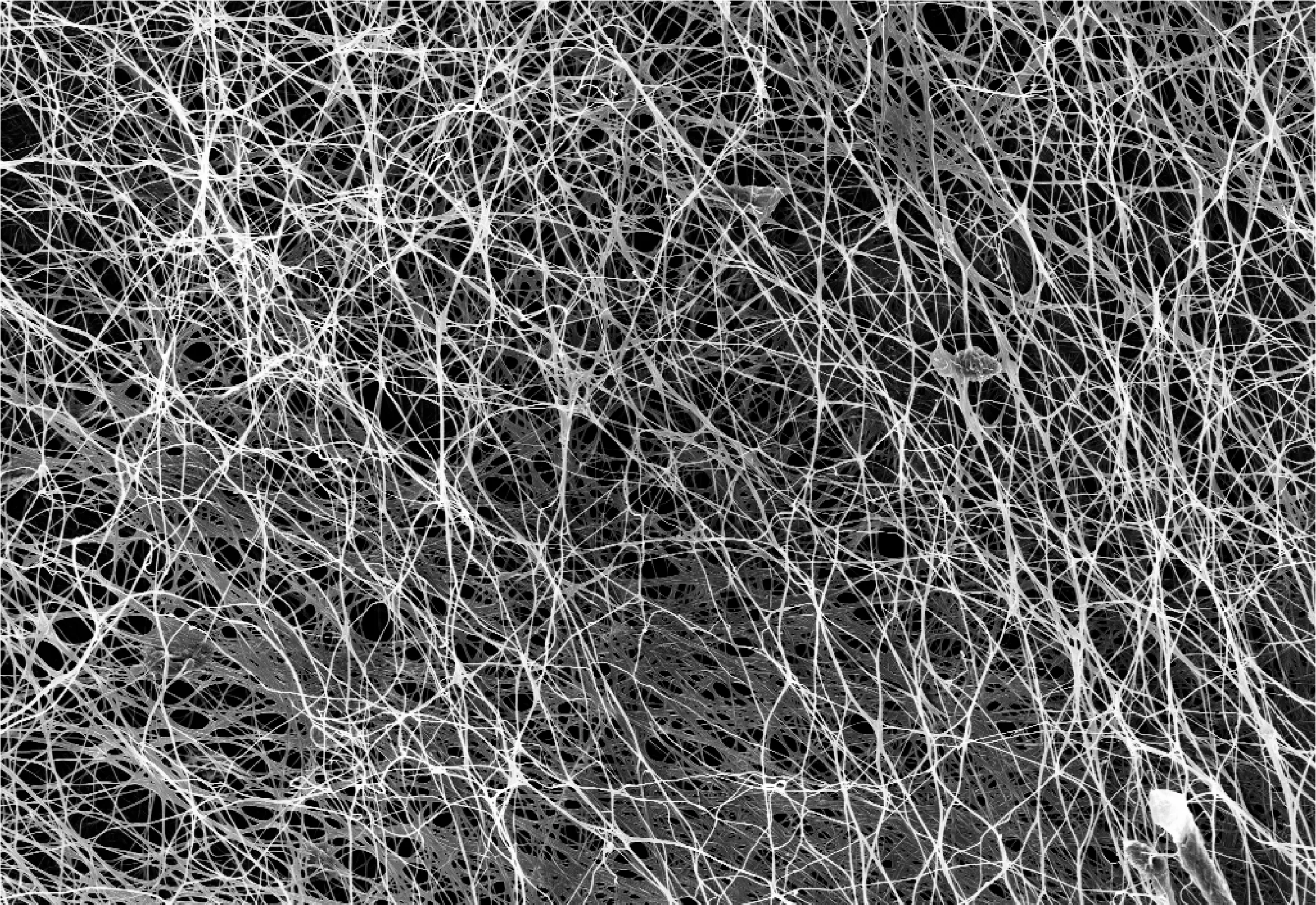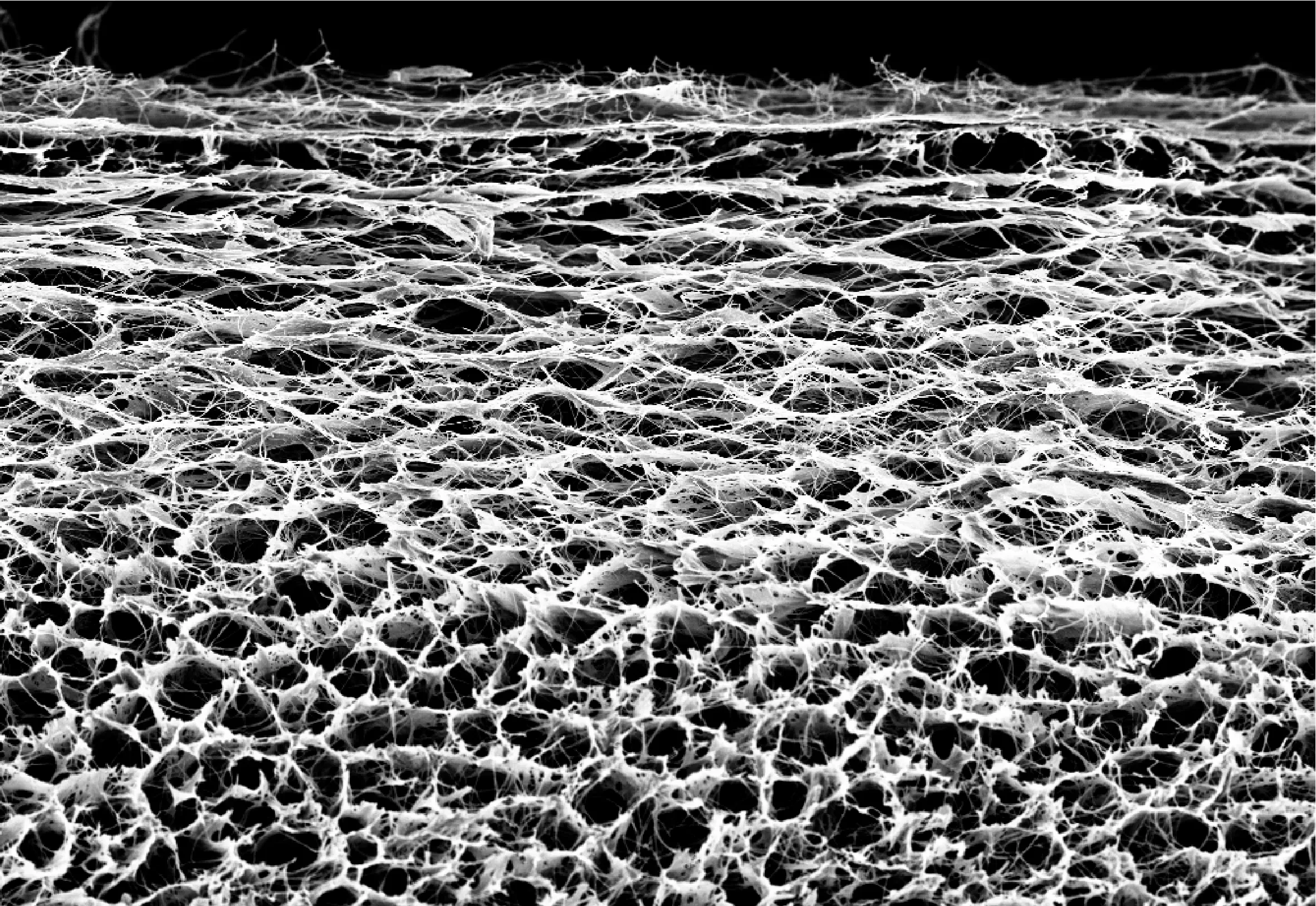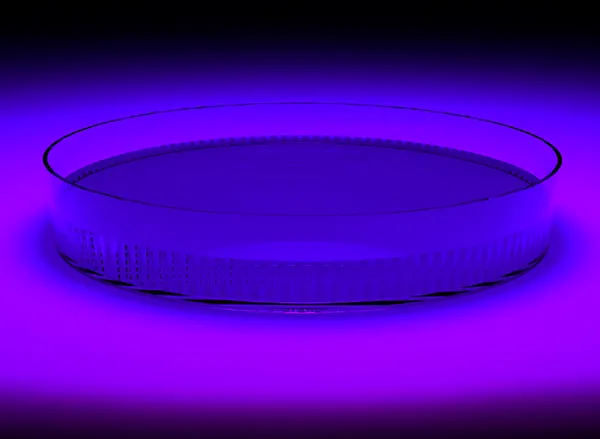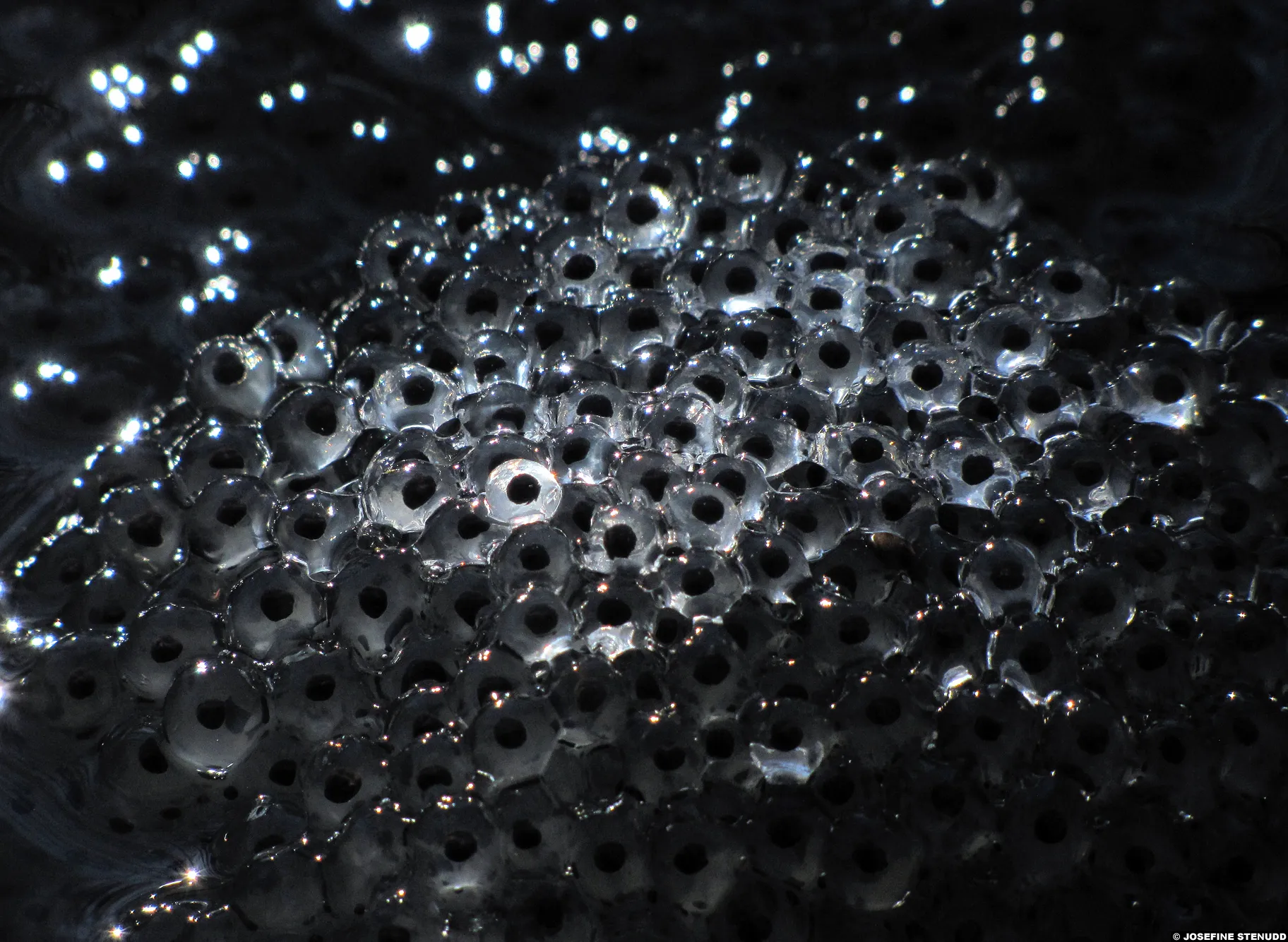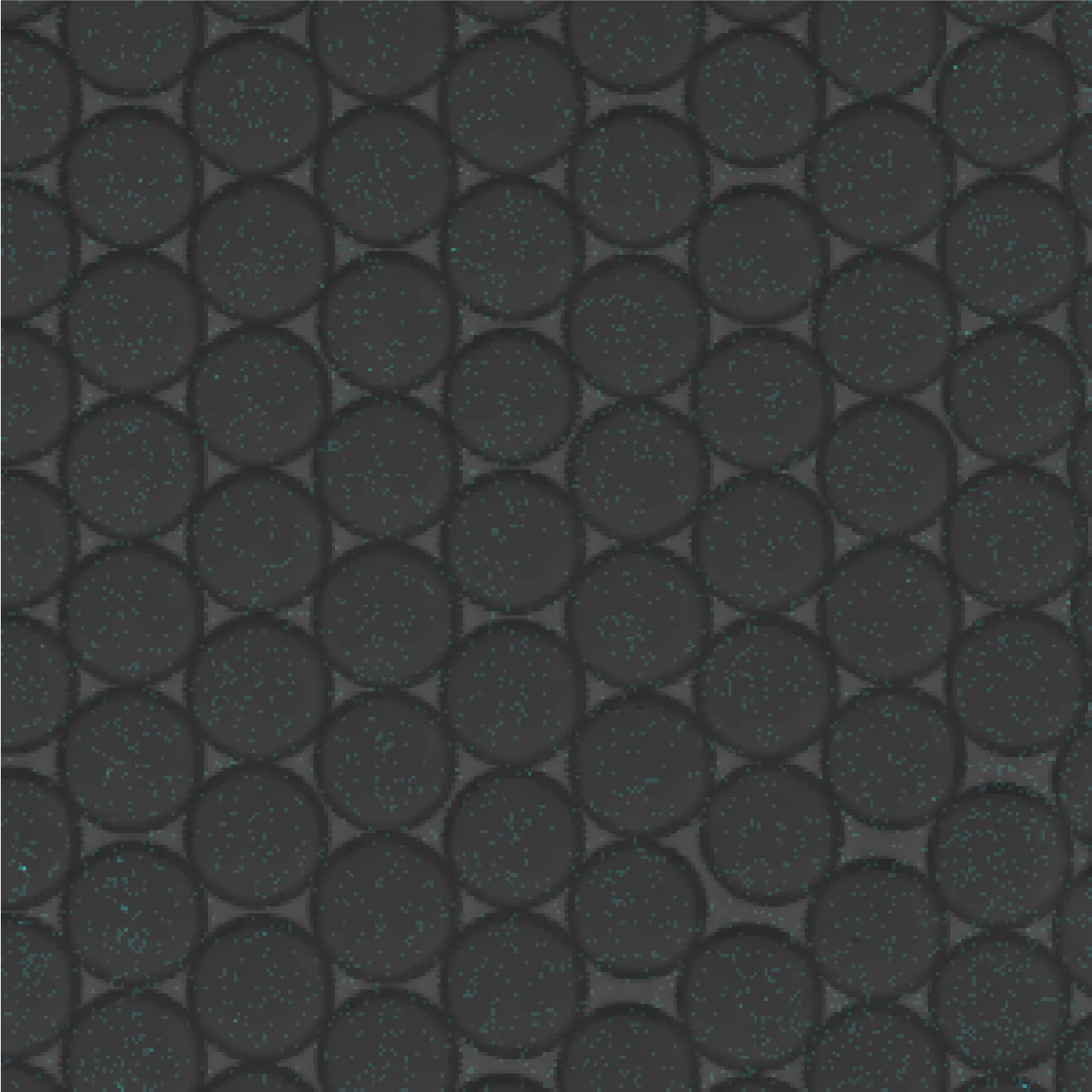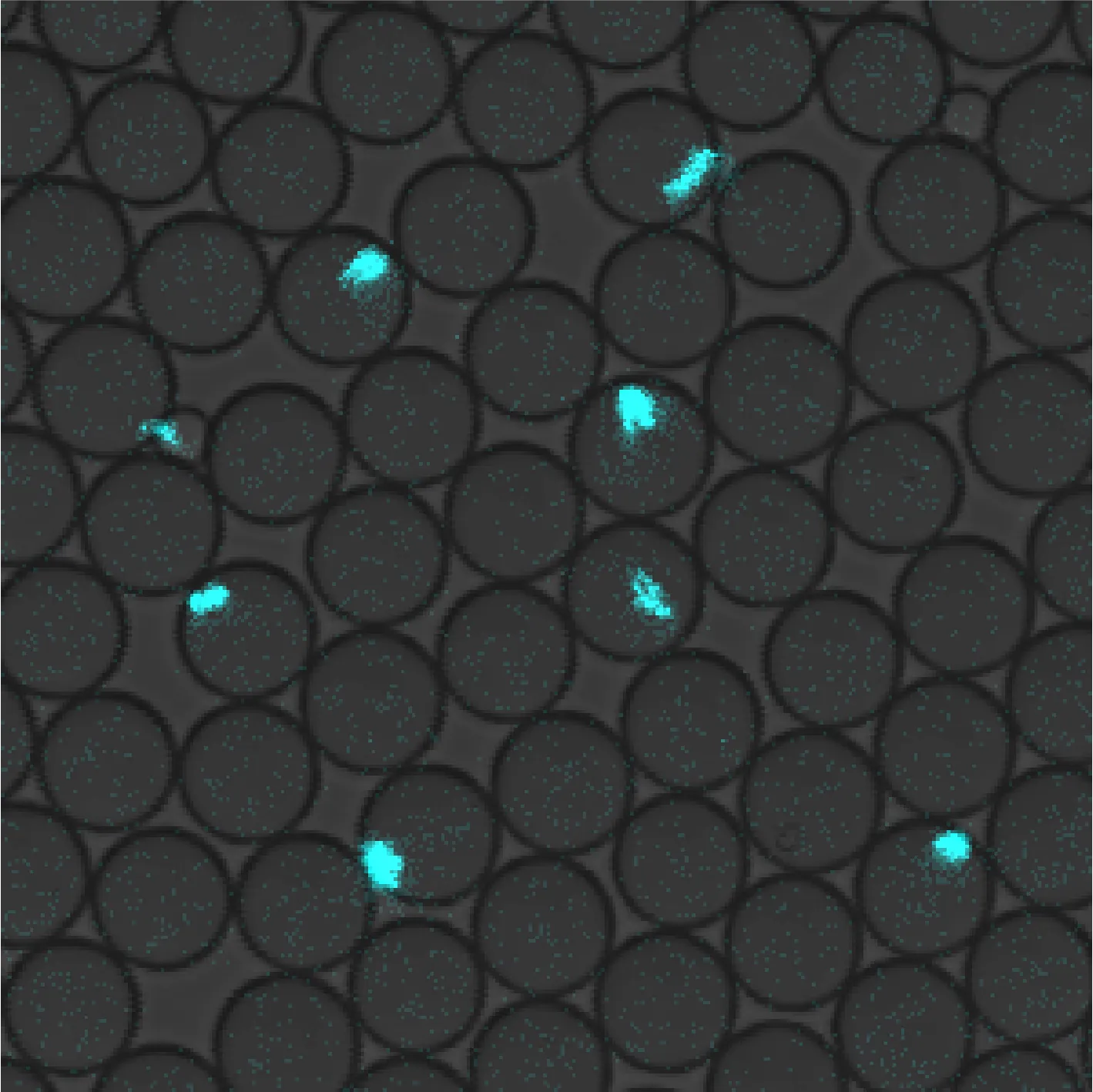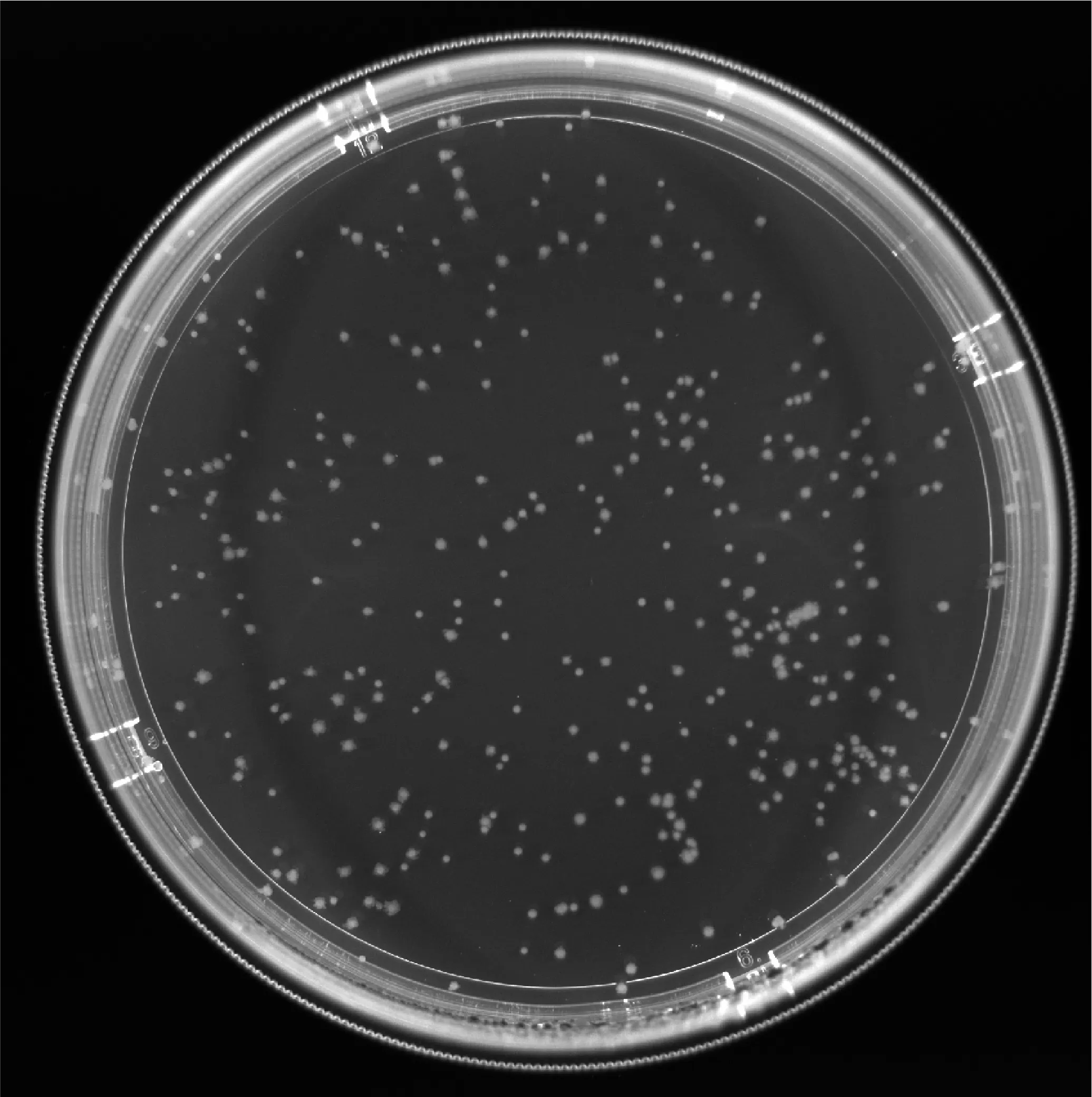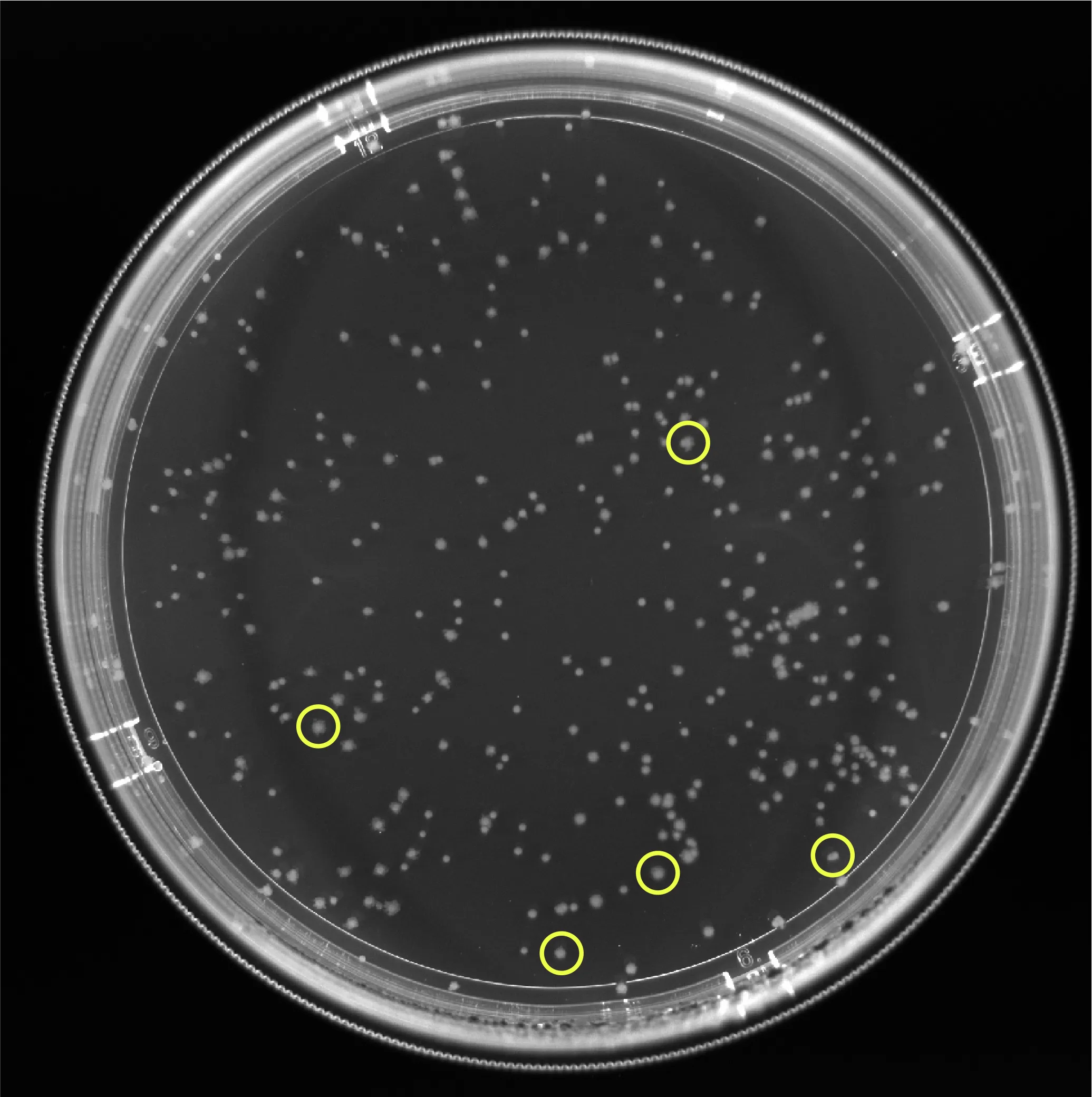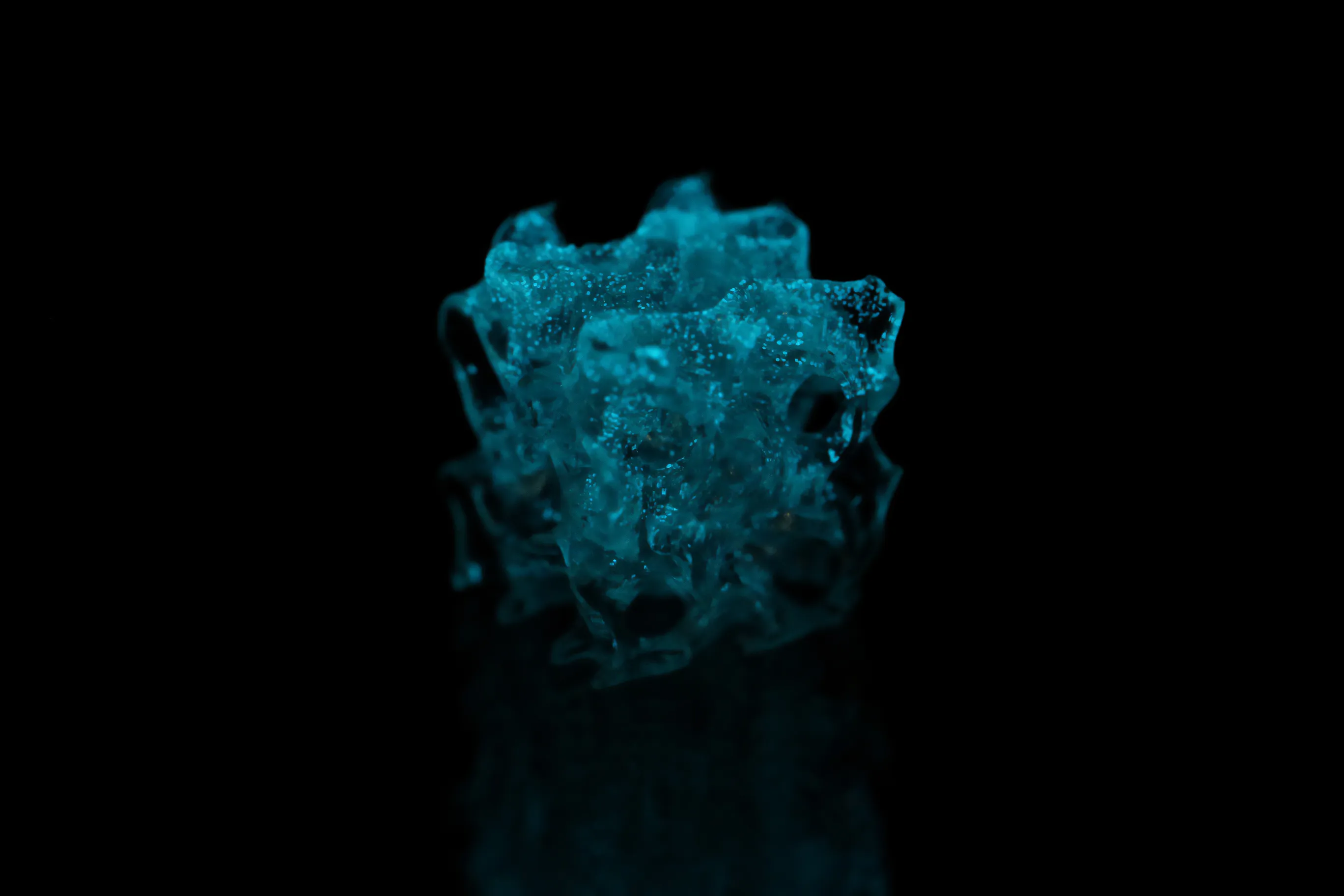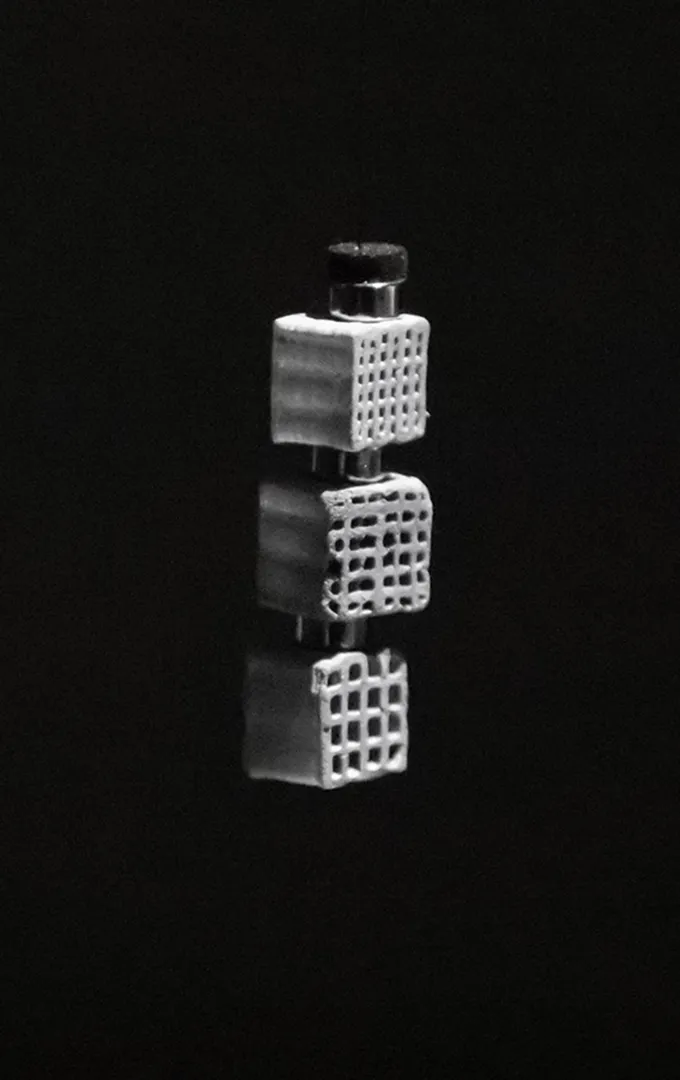Supercellulose
Enhanced bacterial cellulose made possible by directed evolution.
We're discovering a new frontier of sustainable materials. Microorganisms in nature create diverse materials, and we're learning to harness their abilities for human use. Researchers have developed a technique to supercharge the evolution of cellulose-producing bacteria, selecting the best strains for efficient material production. This is a leap towards a future where living organisms solve our material needs while respecting the planet.
Researchers
Institution
Tags
Properties
What makes it unique?
Robust fibres
Cellulose is ubiquitous; it is present in everything from paper to cotton, fruits, and wood. It is one of the most abundant organic polymers on Earth. Structurally, cellulose consists of interconnected fibres, forming a robust network that adds unique properties to the material.
Produced by bacteria
Bacterial cellulose is the same substance, but produced by bacteria instead of plants. While chemically similar to natural cellulose, its distinct macrostructure significantly changes the material's properties. Bacterial cellulose is highly pure. It's stronger, and capable of retaining much more water than plant-based cellulose and can be cultivated and processed in innovative ways.
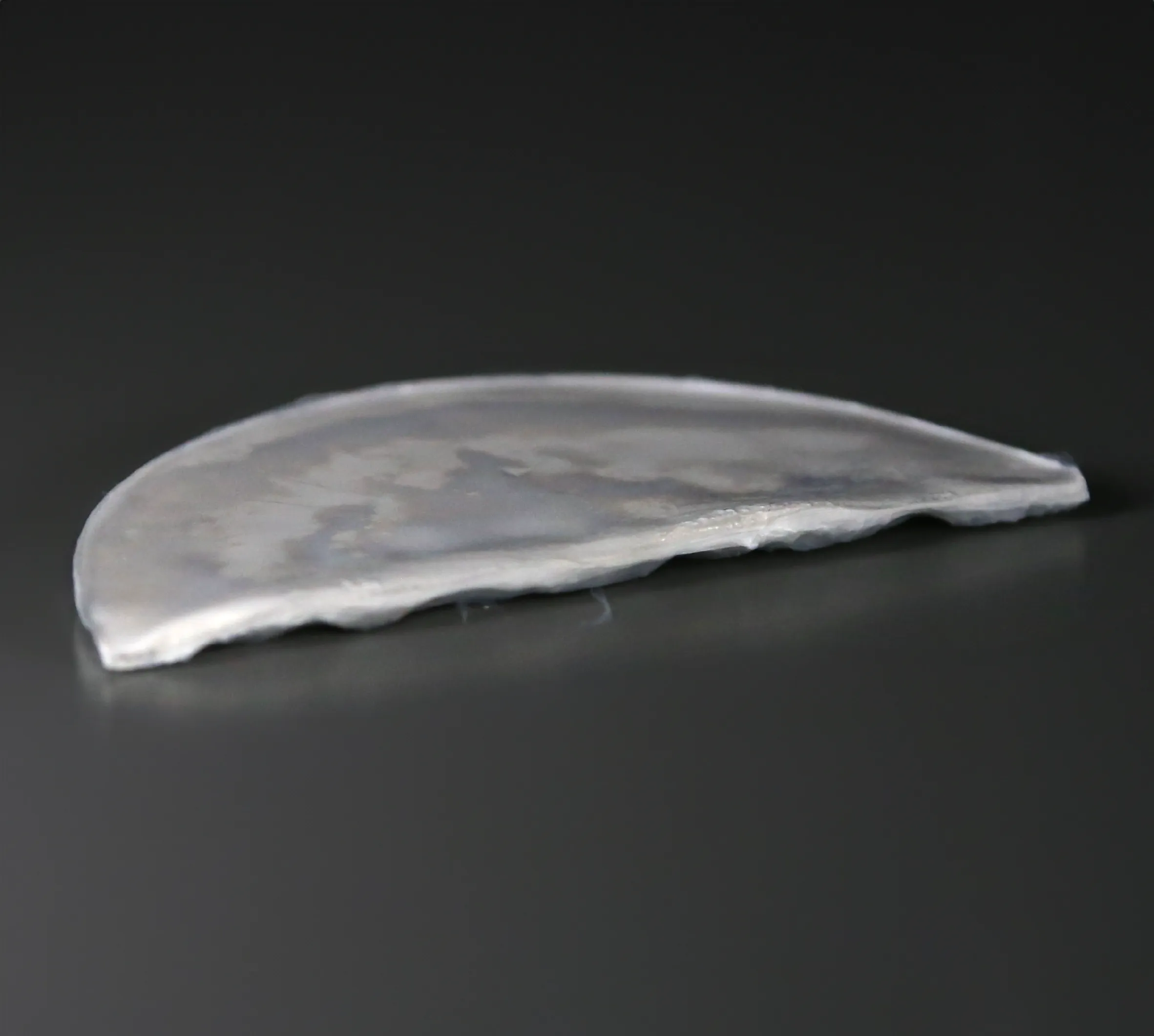
Image of washed and freeze-dried Supercellulose.
Efficient growth
Supercellulose is essentially bacterial cellulose, but produced by particular strains of evolved bacteria that are capable of creating more cellulose compared to native bacteria. These evolved bacteria are optimized to create up to 70% more material mass.
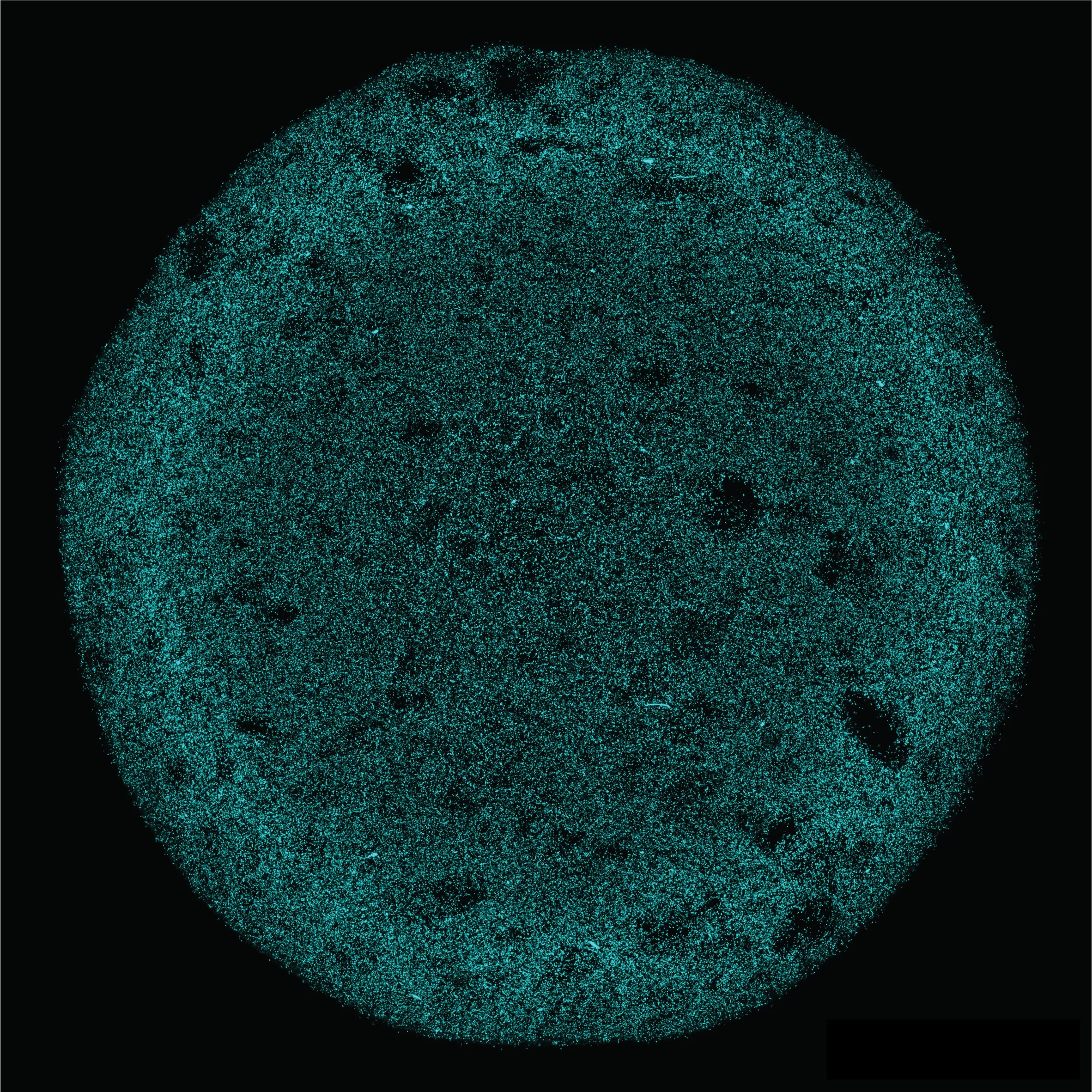
In this example, Komagataeibacter sucrofermentans are used as bacteria.
Applications
What to do with it?
Bacterial cellulose is already a successful sustainable material, used in food industry, medical field, commercial, industrial products and other technical areas. Its versatile structure enables users to mold it into various shapes, making it adaptable to diverse situations. A telling example would be their application as a temporary skin substitute for human burns and other dermal injuries. So Supercellulose has lots of potential in applications!
Suitable for 3D printing
The ability to overproduce cellulose in a viscoelastic gel makes the Supercellulose suitable for the 3D printing of engineered living materials with tunable architecture across multiple length scales.
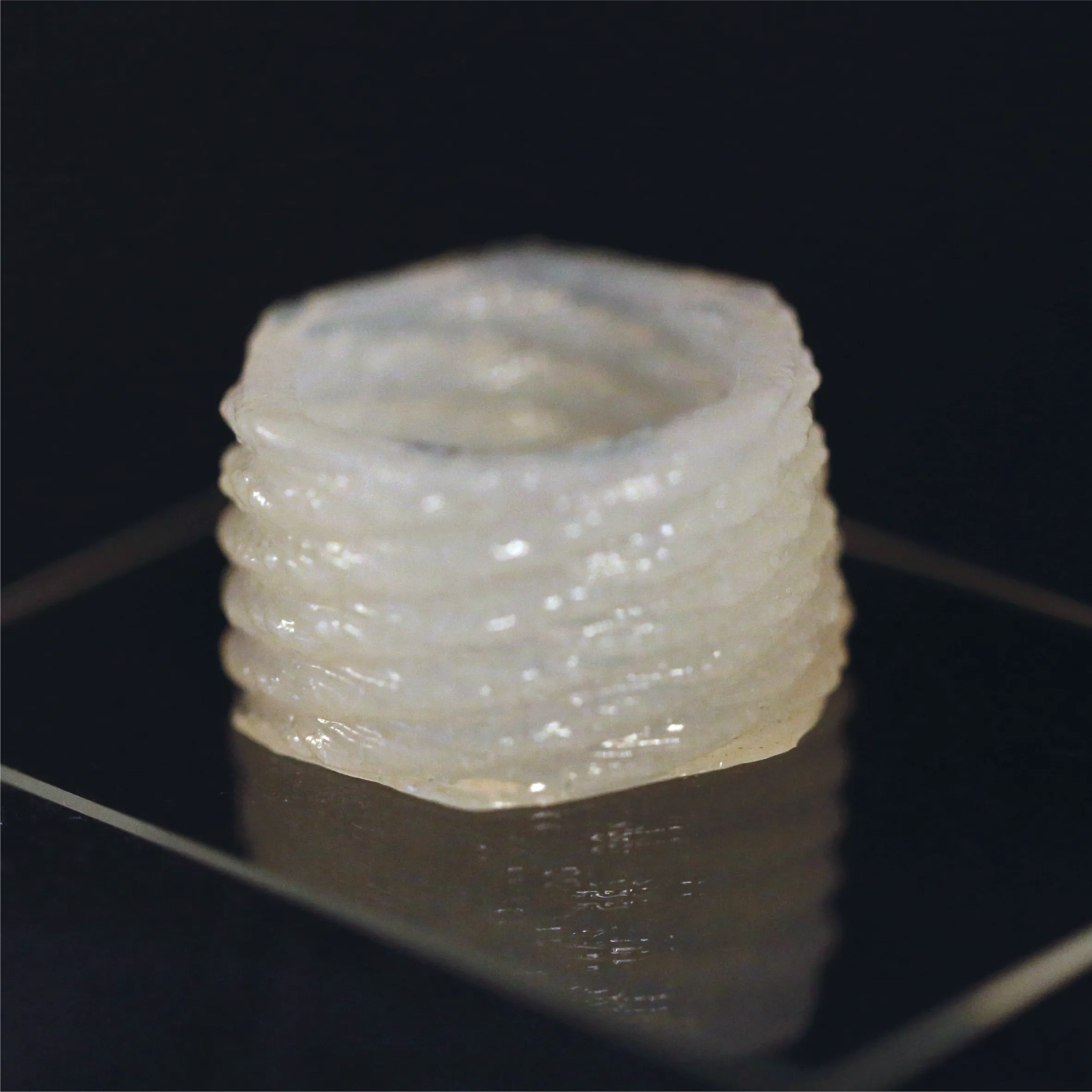
Image of the engineered living object obtained by 3D printing from a gel loaded with K. sucrofermentans.
Composition
What’s it made of?
Fibres & Bacteria
Supercellulose is a composite of cellulose fibres, water, cellulose-producing bacteria and nutrients to keep them alive and happy. The bacteria can be removed after growing the fibres so that the pure cellulose can be used for further processing.
Bacteria strains
Different strains of bacteria have different abilities to produce cellulose. Wild-type bacteria produce cellulose relatively slowly; that’s why researchers try to find more efficient bacteria strains.
Fabrication
How is Supercellulose fabricated? How to find the most efficient cellulose-producing bacteria?
In a process called directed evolution, new bacteria strains are created and selected to find the ones that produce the most cellulose. In a sequence of steps, cellulose-producing bacteria are mutated, tested for their ability to produce cellulose, selected, and analysed. This process can be compared to how new plant varieties are created, just much faster. Here are the steps to get a new batch of optimized bacteria.
Mutants Library
The first step of the process is to create a "mutant library" of the bacteria. To achieve this, UV-C radiation partially breaks the DNA, creating mutations. The exposure time is carefully calibrated to generate mutations without killing the bacteria. After exposure, the bacteria are kept in the dark for one hour. Following a recovery period, they are prepared for the next step.
Encapsulation
Mutants are encapsulated in uniformly sized droplets. Each droplet contains either one bacterium or none and all the necessary substances for survival. This encapsulation is achieved using a microfluidic chip that leverages surface tension to create the droplets precisely at high speed. These droplets are water-based and suspended in an oily medium.
Encapsulated bacteria

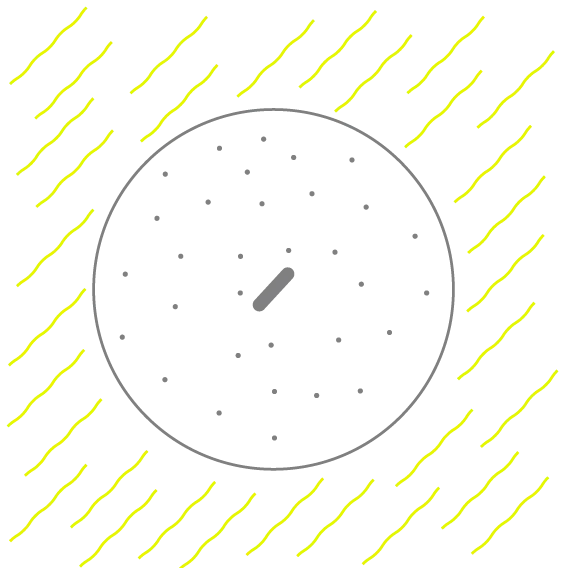
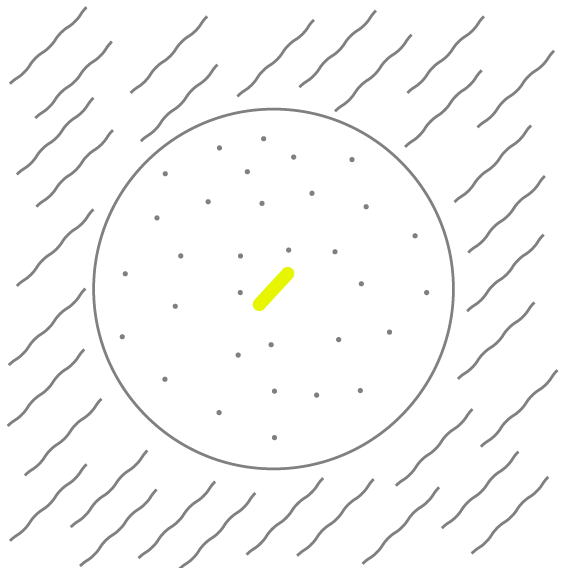
Each droplet is water-based. It may also contain food (sugars, proteins) for the encapsulated bacteria to grow and propagate.
Droplets are separated from each other by an oily substance called oil phase. A surfactant can be added to the oil to stabilise the droplets.
The water phase completely encapsulates the bacteria in the droplets. In ideal conditions, each droplet initially contains at most a single active bacterium, and some droplets may stay empty.
Cellulose Growth
Time passes as bacteria grow cellulose. Some grow a little, others grow a lot. Each droplet contains one bacterium, creating different amounts of cellulose in a set time.
Selection
Bacteria are sorted based on how much cellulose they produce in a set time. Again, this uses a microfluidic chip that can process a large number of droplets in a short time.
The microfluidic sorter in action.
Analysis
In a last step, the DNA of the selected bacteria strains are analyzed to see which mutation could be responsible for the increased cellulose production. The selected bacteria can then be reproduced and used to manufacture cellulose.
Droplets are created with a technique called microfluidics. This highly precise way of manipulating liquids at a small scale is an essential tool for creating this material.
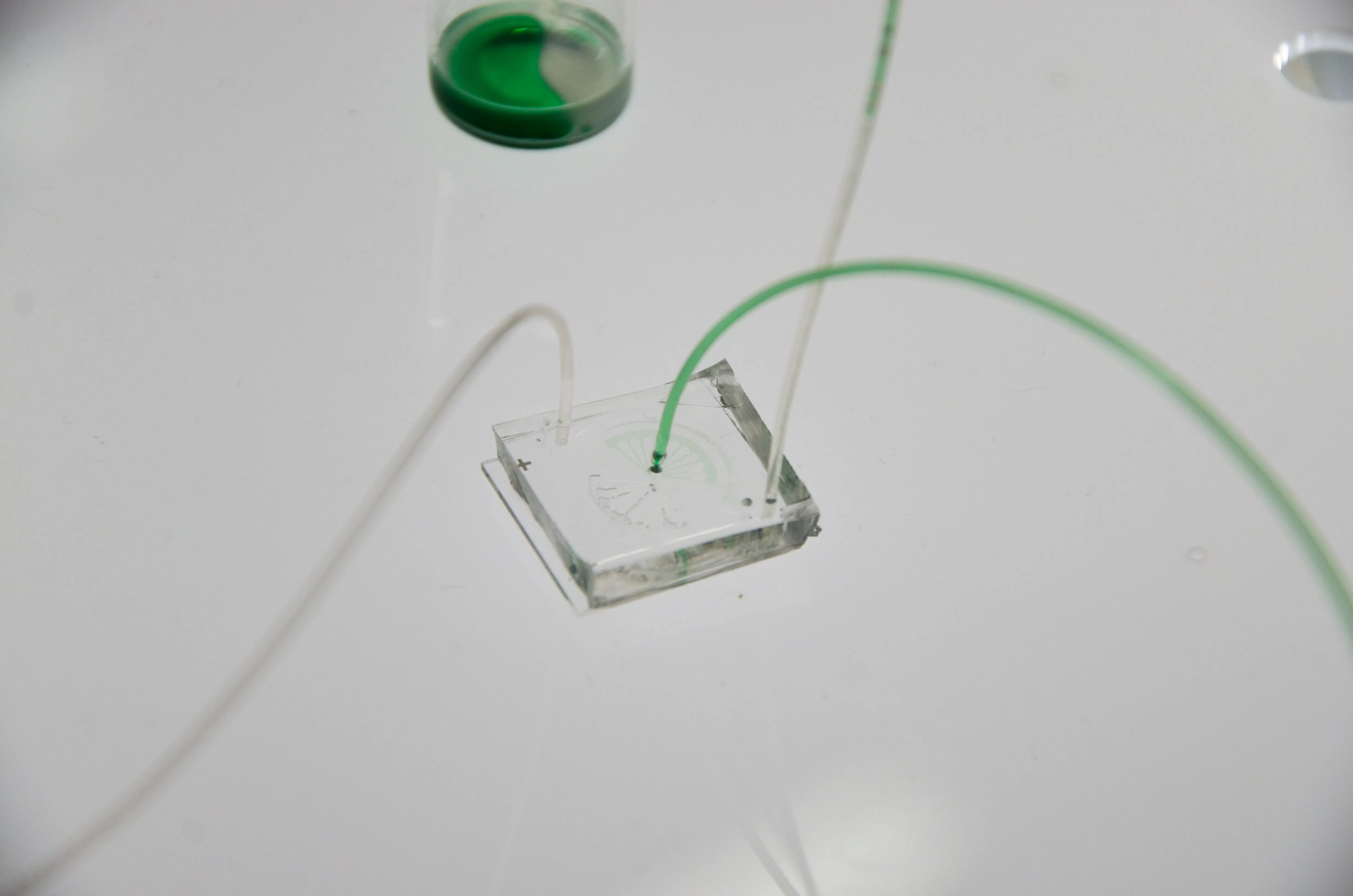
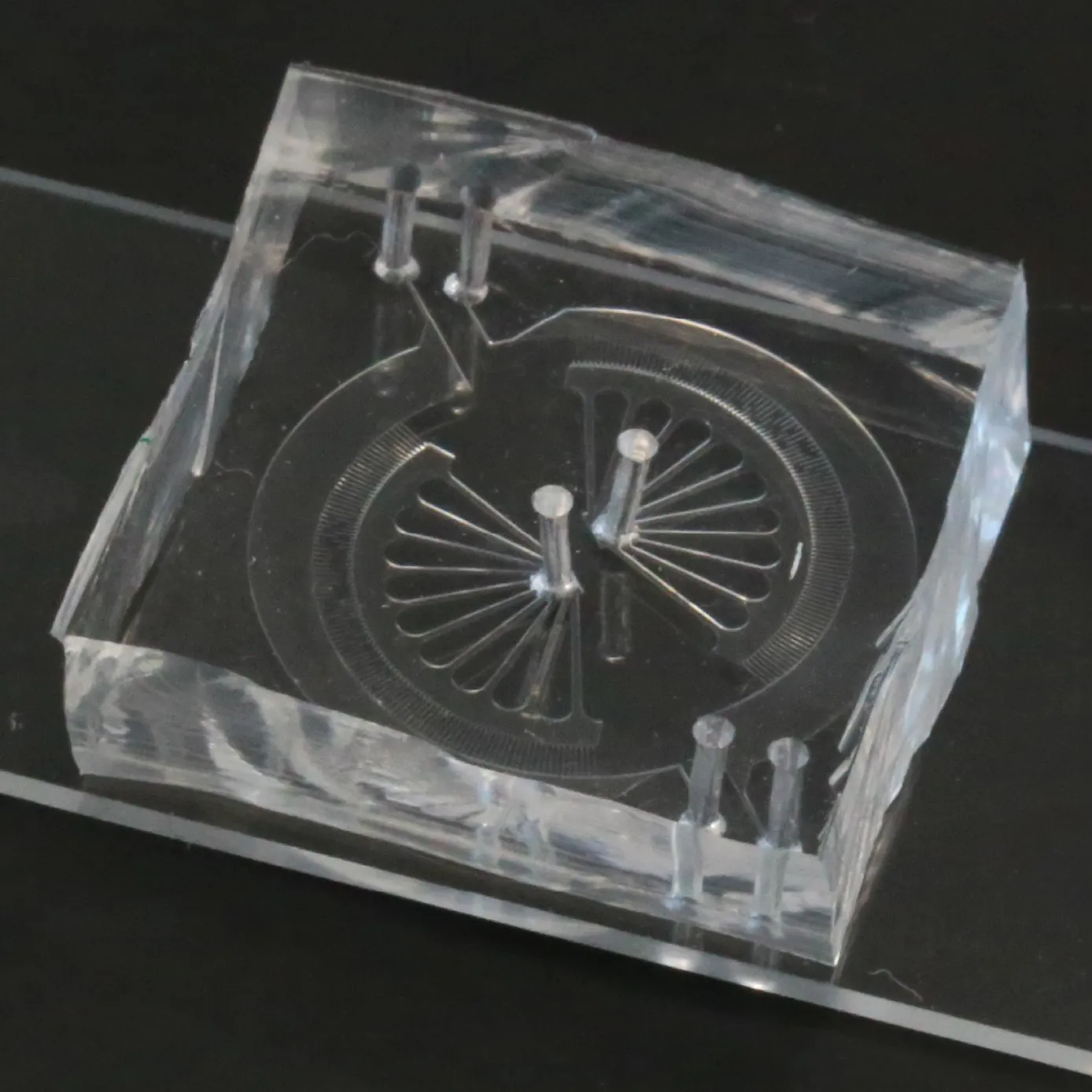
Microfluidics refers to the behaviour, precise control, and manipulation of fluids geometrically constrained to a small (typically sub-millimetre) scale at which surface forces dominate volumetric forces.
The oil and water phases are pressed into the microfluidic chip to create droplets. In the chip, the two liquids move through tiny channels to create equally-sized droplets, which leave the chip through a tube. The droplets are liquid when created, but surfactants can stabilise them to keep their shape.
On the left side, you see a stream of small droplets leaving the transparent tube.
These microfluidic chips are moulded from silicon and then bonded to glass. Each chip contains two independent "circuits" for combining the liquids in an emulsion. Droplet-based microfluidics allows creating and manipulating droplets precisely.
Feedback
Julie wonders what you think about this research. Let her know!

Researcher of Supercellulose
Links
Want more details about the Supercellulose?
Read the Research paper: Directed evolution of material-producing microorganisms
Have questions? Get in touch
